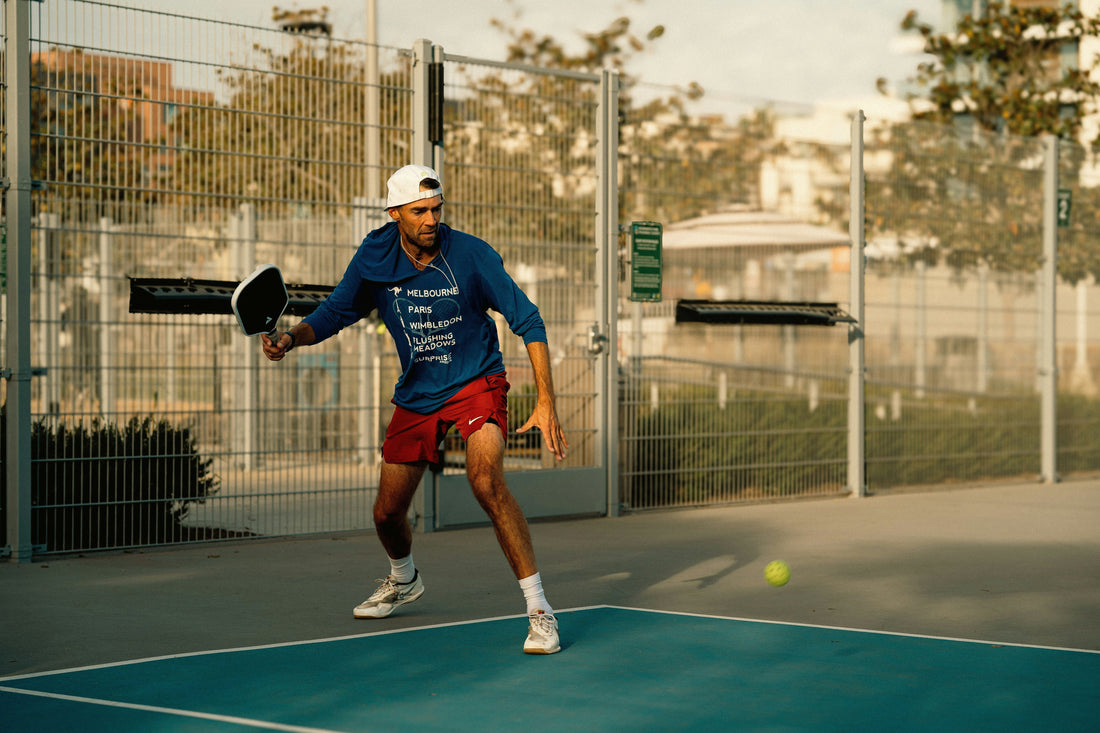
Real Practice, Real Progress: A Personal Take on Pickleball Training Aids
If you're looking to level up your pickleball game without spending all day on the court, you're not alone. Here's how training aids helped me practice smarter—and actually see results.
Table of Contents
- 1. Introduction: Why Training Aids Matter
- 2. Why Pickleball Training Aids Help More Than You’d Think
- 3. Top Pickleball Training Aids That Actually Work
- 4. No Court? No Problem.
- 5. What Changed for Me
- 6. Final Thoughts
1. Introduction: Why Training Aids Matter
When I first got into pickleball, I figured the best way to improve was just to play more. Matches were fun, and I’d leave the court thinking I was getting better just by showing up. But after a while, I hit a plateau. That’s when I started looking into pickleball training aids—and honestly, I wish I had done it sooner.
These tools aren’t about gimmicks or shortcuts. They’re about getting more out of your time and focusing on the parts of your game that really need work.
2. Why Pickleball Training Aids Help More Than You’d Think
If you're anything like me, you probably don't have unlimited access to a court or a partner who wants to drill with you every day. That’s what pushed me to try solo practice tools. A rebounder, some cones, and a couple of DIY targets turned my garage into a training space—and the results showed up fast.
It wasn’t about practicing harder. It was about practicing smarter.
3. Top Pickleball Training Aids That Actually Work
Here are a few pickleball training aids I’ve used personally or seen others benefit from—and how they’ve made a difference.
3.1 Rebounders
These are my favorite. You hit the ball, it comes back, and you reset. I use mine to work on volleys and reflexes. No need for a partner, just rhythm and repetition. It’s oddly satisfying and surprisingly effective.
3.2 Target Nets or Tape Marks
I made some simple targets out of painter’s tape on the wall. It’s a basic idea, but hitting a small square over and over made me way more aware of where my shots were landing—and where they weren’t.
3.3 Agility Tools
Footwork wasn’t something I thought about at first. But once I added a few cone drills and ladder runs to my warm-ups, I noticed I was getting to balls quicker and recovering better between points.
3.4 Ball Machines
I got to try one at a clinic. It’s a big investment, sure, but it let me work on high-speed reactions and backhands in a way I couldn’t replicate otherwise. If you’re serious about competing, it’s worth looking into.
3.5 Resistance Bands
For me, these are more about injury prevention. A few quick resistance exercises before I play helps my shoulder feel more stable, especially on serves and overheads.
4. No Court? No Problem.
One thing I love about these aids is that they don’t require a fancy setup. My rebounder sits next to my driveway. I keep cones and bands in the trunk of my car. You can get real practice in—even if it’s just 20 minutes here and there.
If you’re busy, like most of us, that flexibility is huge.
5. What Changed for Me
Once I started using pickleball training aids regularly, I felt more in control of my game. I wasn’t just reacting anymore—I was choosing my shots. And even more than that, I started looking forward to practice again. There’s something rewarding about working on one small skill and actually seeing progress.
It’s not about perfection. It’s about stacking small wins.
6. Final Thoughts
You don’t need a coach or a full court to get better at pickleball. You just need a few good tools, a little space, and the willingness to put in the reps.
If you’re stuck in a rut—or just want to sharpen your game—pickleball training aids might be exactly what gets you moving again. They helped me. Maybe they’ll help you too.
Ready to Train Smarter?
Discover our top-rated pickleball rebounders—perfect for home practice and solo drills.
